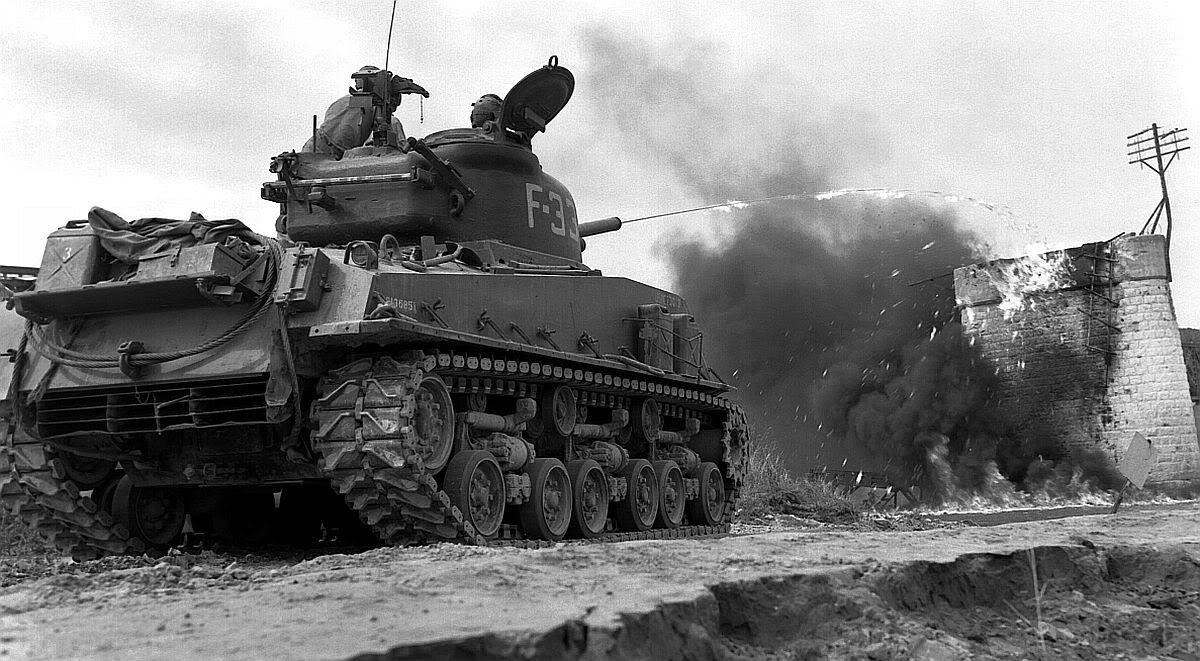

RELATED The largest tank battle in history began 75 years ago today - here’s how it changed WWII "We knew they would be defending the city," Smoyer said. "Let's knock the hell out of it."īut at that point in the war, the Germans were desperate to slow the Allied advance. "Gentlemen, I give you Cologne," the commander said. Smoyer recalled hearing his company commander's voice crackle over the radio. That's what happened in Cologne, starting on March 5, 1945. They could truly go toe-to-toe with the Panther or Tiger." It also had automatic transmission, so if they ran into a dicey situation, they could quickly back up. "It had a 90mm gun, as big if not bigger than anything the Germans had. Rose's elite crews, they were given this Pershing tank," Makos said. "Since his crew was considered one of Gen. So pressing was the need that the Pershings' first real test came in battle. It had become obvious as the Allies punched through Normandy that the German hardware, the Panther and Tiger tanks, had them outmatched. The Army rushed 20 Pershing tanks to Europe after disastrous losses at the Battle of the Bulge, when it resorted to borrowing Sherman tanks from the British. "It brings back a lot of memories," Smoyer said of watching his 21-year-old self in action.
#Major tank battles of world war ii movie#
He picked the lead tank - Smoyer's crew - and his footage captured their defeat of a German tank (one of two they would destroy) near the city's famous cathedral, images that played in movie theater newsreels during the war and now exist in digital form. Portions of that two-day conflict were filmed by renowned combat photographer Jim Bates, who grew up in Colorado Springs and eventually parachuted into France with the 82nd Airborne on D-Day and followed troops all the way to the fall of Berlin.Īs the battle for Cologne loomed, Bates decided to follow one tank throughout the conflict. And some of them never came home."Įarlier, Smoyer and Makos chatted about the book project that took six years to complete, included trips to old battlefields and even reconnected Smoyer with the German soldier whose tank he faced in the brutal battle for the city of Cologne. "We want to draw attention to the fact that some of Denver's bravest men walked through those halls. "Not a lot of people know that Union Station has that World War II history," Makos said.

The son of a Polish rabbi who emigrated to the United States, he was memorialized when Denver’s Jewish community built the hospital that still bears his name. He became the highest-ranking American officer to be killed by enemy fire in the European theater. In a matter of weeks, Smoyer's resourcefulness under fire would help Spearhead take the German stronghold of Cologne and continue the countdown to war's end.Īnd shortly after that, Rose, racing ahead of an American column caught in the crossfire of an enemy ambush, would be shot - murdered, the Denver Post headlines proclaimed - after a German tank cornered his vehicle and he attempted to surrender. That brief experience, eight miles behind enemy lines, marked the closest thing to a personal encounter between the two men. Rose liked what he saw, and felt the new hardware tipped the firepower scales in the Americans' favor. Smoyer picked off a second chimney, then a third - a mile-distant speck in his scope - as the crowd that gathered cheered both his skill and the tank's awesome capabilities. With an ear-splitting bang, the shell demolished the chimney, while an unexpected sideways blast of gasses from a newly configured firing system sent the assembled officers, including Rose, tumbling to the muddy ground. He heard his sergeant call the range and specify a target - "The chimney!" - that seemed hopelessly precise for his first live fire in a just-off-the-assembly-line tank.īut his uncanny eye, honed as a kid during nighttime escapades hunting for frogs with his BB gun, didn't fail him now. Smoyer used the tank's sighting mechanism to draw a bead on an abandoned farmhouse in a village more than a half-mile away. Smoyer felt lucky to serve under such a fearless and beloved commander in the outfit Rose had dubbed "Spearhead" - so named for its habit of leading the American assault. Barely more than a kid from a Pennsylvania steel town, he had never fired the new tank's cannon, and here he was about to perform before a general whose legend grew by the day. The young gunner, 21-year-old Clarence Smoyer, fidgeted.


 0 kommentar(er)
0 kommentar(er)
